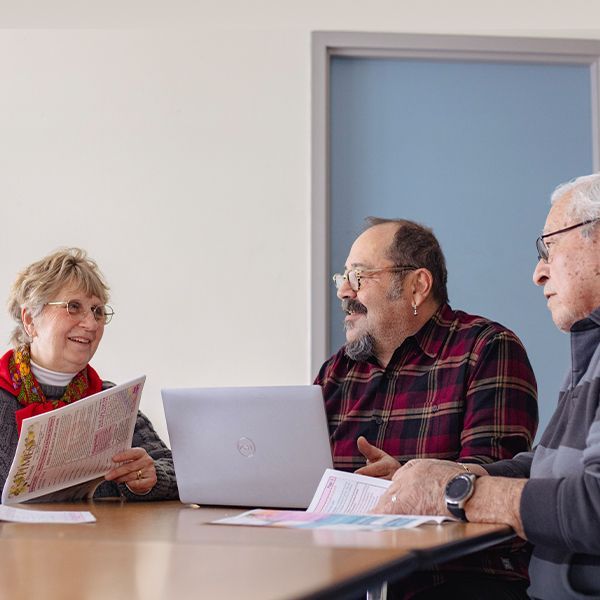The Power of Personal Stories: How to Feature Senior Citizens in Your Newsletter

Marketing and advertising industries often focus their attention on youth, beauty, and the latest trends. We see it everywhere, from ads on Facebook to print campaigns in local newspapers. This often results in the faces and voices of older adults going unseen and unheard. However, seniors’ stories and life lessons hold immense value.
First, they can provide potential new members of your senior center with images and tales they can relate to. Older adults might feel more confident attending events and activities when they see and hear the stories of people like them. Sharing these stories can not only help your target audience feel connected, but also demonstrate their resilience, culture, and history to the community at large.
Your senior center’s community-facing newsletters can be an excellent avenue to showcase these narratives. Here are a few tips to effectively incorporate the personal stories of senior citizens into your community newsletter.
Senior Center Marketing: Building Awareness Through Storytelling
- Identify your storytellers
Before reaching out to any seniors you’d like to include in your newsletters, think about the focus of the stories you want to feature. You could explore themes such as life lessons, historical events, or hobbies. Another option might be to feature experiences during different periods of time, such as the Great Depression or World War II.
To elicit genuine stories, it’s crucial to talk with older adults you trust. They may be people who are already members of your senior center or those you are hoping will join. Take the time to introduce the topic and fully explain your intent. Assure them that their stories will be told respectfully and thoughtfully. Building this rapport will encourage them to open up and share more meaningful insights.
- Conduct thoughtful interviews
Once you’ve identified potential storytellers, it’s time to prepare for interviews. If you’ve never done this before, it might seem a little daunting. The key is to be organized and to approach these conversations with empathy and curiosity. Using open-ended questions typically allows people to express themselves freely, such as: - What is your fondest childhood memory?
- Can you share an experience that changed your perspective on life?
- What advice would you give to younger generations?
Listen attentively and encourage them to elaborate on their experiences. Take notes or record the conversation (with permission) to ensure accuracy when writing.
- Create meaningful engagement
After collecting stories, it’s time to write and develop visuals. Aim to transform raw interviews into compelling narratives. Start with an engaging hook that captures the reader’s attention, and use vivid descriptions and quotes to bring the story to life. Highlight emotions, lessons learned, and the impact of those experiences.
For example, instead of writing “She lived through the Great Depression,” paint a picture of the situation. You could write “At the tender age of 10, Ruth stood in line for hours, clutching her mother’s hand, waiting for a loaf of bread that would sustain them through the week.” This draws readers into the experience, making it relatable and impactful.
Complement your written stories with visuals. Photographs of seniors in their youth or at family gatherings, or that illustrate moments related to their stories, can create a more immersive experience for readers. If possible, encourage seniors to share these images and provide captions that explain their significance. If you don’t have original images at your fingertips, consider a content library with graphics and stock photos like WeCreate, designed specifically to assist centers like yours with communication tools.
- Consider Regular Newsletter Features
Think about creating a regular column dedicated to senior stories or organizing themed editions that focus on specific experiences or milestones in their lives. This consistency can help build anticipation among readers and create a space where seniors feel comfortable sharing their narratives.
Remember, incorporating the personal stories of senior citizens into your community newsletter is a powerful way to celebrate their contributions and highlight wisdom. By capturing their narratives, you honor their experiences while fostering connections at the same time.
If you need assistance creating a newsletter you feel confident will represent your senior center positively in the community, we encourage you to learn more about our newsletter services or contact our team. We’re always happy to help!
For more content about crafting the perfect newsletter for your community, visit the “Newsletter Tools” section of our blog.




